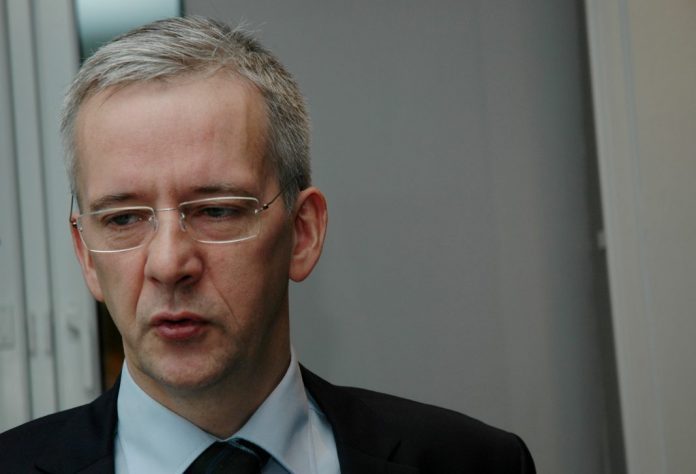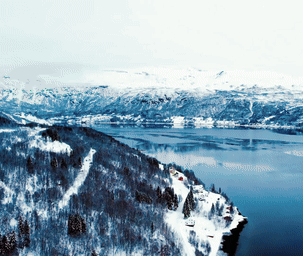Scotland wipes out Bakkafrost margin.
Bakkafrost’s third-quarter numbers tell a simple story. The Faroe Islands are performing, Scotland is not. Group operational EBIT fell to DKK 22 million (€2.9 million, $3.5 million) from DKK 173 million (€22.5 million, $27.7 million) as lower salmon prices met a series of Scottish biological hits that turned volume into loss rather than profit.
The Scottish farming unit recorded an operational EBIT loss of DKK 191 million (€24.8 million, $30.6 million), a deeper red than last year’s DKK 179 million loss (€23.3 million, $28.6 million). Profitability at the cage level worsened to DKK -36.09 per kg (€-4.69, $-5.77) from DKK -33.14 per kg (€-4.31, $-5.30). Management attributes the deterioration to a September Pasteurella outbreak at Portree that forced earlier-than-planned harvesting and raised mortality. The freshwater side also absorbed DKK 25 million (€3.3 million, $4.0 million) of incident costs in Scotland, with Freshwater Scotland EBIT of DKK -38 million (€4.9 million loss, $6.1 million loss) versus DKK -6 million (€0.8 million, $1.0 million) a year ago.
Faroes a different story
By contrast, the Faroese engine continued to run smoothly. Farming Faroe Islands EBIT per kg was DKK -1.13 (€-0.15, $-0.18), still negative but better than Scotland by an order of magnitude, supported by large, high-quality smolt, controlled lice pressure and low mortality. Group harvest rose to 30,678 tonnes gutted weight, with the Faroe Islands up to 25,392 tgw and Scotland slightly down at 5,286 tgw.
Price was the other headwind. An 11.9 percent global supply increase in Q3, including inventory effects, pushed reference prices lower. The company notes a 13.1 percent year-on-year decline in NOK prices for 4–5 kg superior fish. Contracted pricing softened the blow. Statistics Norway’s weekly export price outpaced the Nasdaq Salmon Index in the quarter, indicating contracts clearing at a premium to spot, with Euronext futures for 2026 around €7.6 on thin liquidity. Even so, the blend could not offset Scottish biology.
The operational picture in Scotland is now the central investment question. The company argues that the remedy is already in train. Applecross has been repositioned as the nucleus of a large-smolt strategy, producing batches in the 200–400 g range and operating as a stand-alone facility to tighten biosecurity. Average transferred smolt weight in Scotland reached 155 g in the quarter, up 80 percent year on year, while Applecross transfers averaged 229 g. Smolt numbers also stepped up to 3.6 million from 1.9 million. If larger, more robust smolt translate into faster growth, shorter sea time and lower mortality, unit costs should follow down. That is the theory. The Portree event shows how exposed the system remains while the biomass at sea transitions, and management concedes the mortality spike will reduce Scottish volumes in 2026.
Cash generation is still respectable
Operating cash flow was DKK 245 million (€31.9 million, $39.2 million), although down sharply from DKK 575 million (€74.8 million, $92.0 million) last year. The feed and by-products arm helped. FOF EBITDA of DKK 97 million (€12.6 million, $15.5 million) and a 12 percent margin reflected higher internal feed sales of 49,087 tonnes and stable raw material sourcing at 39,940 tonnes. External fish oil sales were zero and fishmeal sales fell to 5,118 tonnes, underlining the division’s growing alignment with internal farming needs in a year of volatile salmon profitability.
Guidance is intact, which will reassure some investors. Management reiterates 104,000 tgw for 2025, split 82,000 Faroe Islands and 22,000 Scotland. For 2026 it guides 112,000 tgw, 92,000 Faroe Islands and 20,000 Scotland. The long-term investment case is pinned to the DKK 5.0 billion (€650.0 million, $800.0 million) 2026–2030 programme. In the Faroe Islands this will lift smolt capacity to about 24.4 million smolt of 500 g and expand feed capacity. In Scotland it includes site expansion and a new harvest and processing facility. Two new dual-freshwater treatment vessels are planned as group assets. About DKK 245 million (€31.9 million, $39.2 million) is earmarked for energy transition. The harvest ambition is 162,000 tonnes by 2030.
Cost reduction
The balance sheet can support the plan. A €700 million sustainability-linked facility, expandable by €150 million, preserves financial flexibility for Scottish cost reduction and Faroese growth. The dividend policy remains a payout of 30 to 50 percent of earnings per share over time, which will depend on how quickly Scottish losses narrow.
For now the investment debate reduces to timing. The Faroes prove the model, with biology and costs moving the right way. Scotland remains a two-year fix, not a two-quarter one. If Applecross and the larger-smolt regime deliver, unit economics should normalise as the biomass mix turns over. Until then, Bakkafrost’s earnings profile will look like its geography, resilient in Tórshavn, fragile in Portree.


